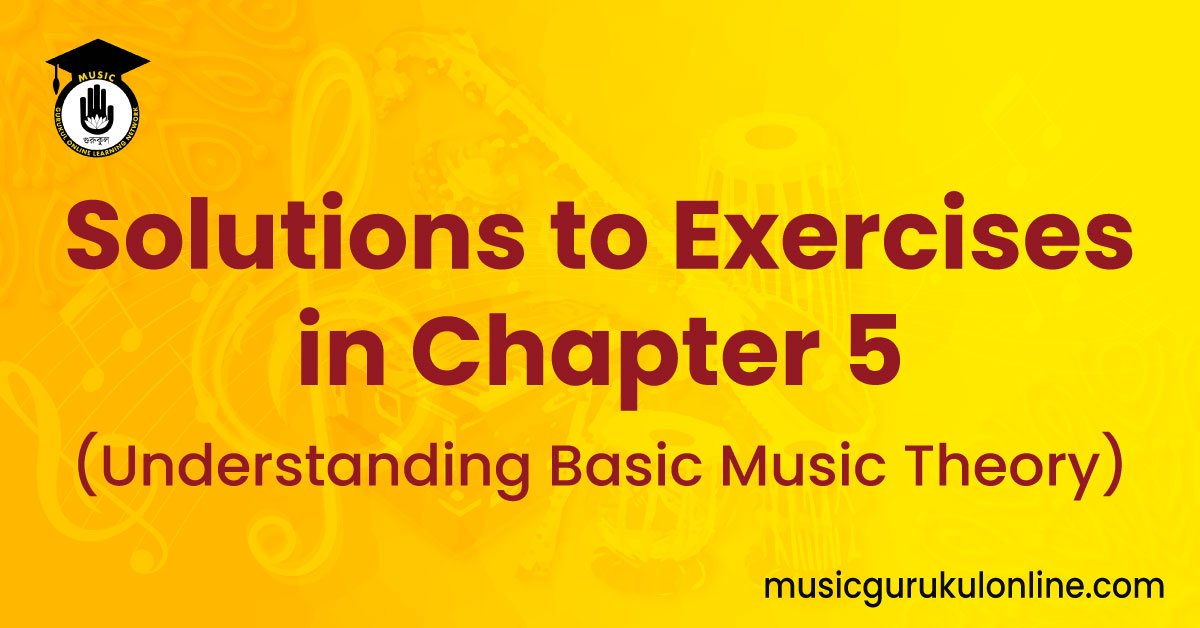Solutions to Exercises in Chapter 5 (Understanding Basic Music Theory)
Table of Contents
Solution to Exercise 5.1.1

Solution to Exercise 5.1.2

Solution to Exercise 5.2.1

Solution to Exercise 5.2.2

Solution to Exercise 5.2.3

Solution to Exercise 5.2.4

Solution to Exercise 5.2.5

Solution to Exercise 5.4.1

Solution to Exercise 5.4.2

Solution to Exercise 5.4.3

Solution to Exercise 5.4.4
You can check your work by
• listening to the chords to see if they sound correct
• playing your chords for your teacher or other trained musician
• checking your answers using a chord manual or chord diagrams
Solution to Exercise 5.4.5
Notice that a half-diminished seventh (Seventh Chords) can be (and sometimes is) written as it is here, as a minor seventh with at ve.

Solution to Exercise 5.5.1 (p. 186)

Solution to Exercise 5.5.2
1. G major (G)
2. A major (A)
3. G sharp major (G#)
4. A minor (Am)
5. E minor (Em)
6. A minor (Am)
7. E seventh (E7)
Solution to Exercise 5.5.3

Solution to Exercise 5.5.4
The tonic, subdominant, and dominant are minor (i, iv, and v). The mediant, submediant, and subtonic are major (III, VI, and VII). The supertonic (ii) is diminished

Solution to Exercise 5.5.5
The seventh degree of the scale must be raised by one half step to make the v chord major. If the seventh scale note is raised, the III chord becomes augmented, and and the vii chord becomes a diminished chord (based on the sharp vii rather than the vii). The augmented III chord would not be particularly useful in the key, but, as mentioned above, a diminished seventh chord based on the leading tone (here, the sharp vii) is sometimes used in cadences.

Solution to Exercise 5.6.1

Notice that the half cadence looks like (and in fact is) a modulation (Section 5.5.6: Modulation) to the dominant. In this very common progression, the dominant seventh of the dominant (which requires an accidental) makes the dominant feel like a very strong resting point, and the piece will continue on in the dominant key for a while, before returning to the tonic key. Also notice the accidental required in the minor key to make the (major) dominant chord.
Solution to Exercise 5.7.1
Your answers will depend on the songs you choose. Check them with a teacher if you can. (Bring the music so the teacher can listen to it while checking your answers.)
Solution to Exercise 5.7.2
If one is available, have a music teacher check your answers.
Read More..
6.1 Ear Training (Understanding Basic Music Theory)
6.2 Tuning Systems (Understanding Basic Music Theory)
6.3 Modes and Ragas (Understanding Basic Music Theory)
6.4 Transposition : Changing Keys (Understanding Basic Music Theory)
Solutions to Exercises in Chapter 6 (Understanding Basic Music Theory)
